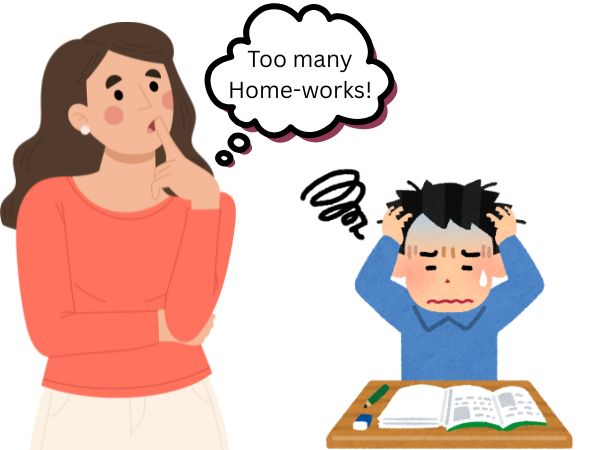If you’ve ever wondered whether your child’s nightly homework load is appropriate — or if you’re a teacher trying to design meaningful assignments — the research is clear: more homework isn’t always better. Both educational psychology and neuroscience studies highlight that quality and timing matter more than sheer quantity.

🧠 The Classic “10-Minute Rule”
One of the most widely cited guidelines comes from Duke University’s Harris Cooper. His “10-minutes-per-grade” rule recommends:
| Grade | Suggested Homework Time / Night |
|---|---|
| 1 | 10 minutes |
| 2 | 20 minutes |
| 3 | 30 minutes |
| 4 | 40 minutes |
| 5 | 50–60 minutes |
| 6 | 60 minutes |
| 7 | 70–90 minutes |
| 8 | 80–100 minutes |
| 9–12 | 90–150 minutes (≈1½–2½ hours) |
For high school students, optimal homework time varies widely depending on subject difficulty, course load, and student support systems. Beyond 2½ hours, studies show diminishing academic returns and increased stress.
Why it works: Short, focused homework sessions match children’s attention spans, reinforce learning without overload, and help maintain motivation.
🧬 Neuroscience & Psychology Insights
Research from cognitive science, behavioral studies, and adolescent neuroscience supports these guidelines — and provides a deeper understanding of why excessive homework can backfire:
Attention & Working Memory: Young brains are less capable of long, uninterrupted focus. Overly long homework sessions often lead to frustration and lower-quality work.
Sleep & Memory Consolidation: Sleep is critical for learning. Homework that delays bedtime or cuts into quality sleep can interfere with memory consolidation.
Stress & Emotional Health: Heavy homework loads correlate with higher stress, anxiety, and depressive symptoms in students. Chronic stress affects the amygdala and hippocampus, which are vital for emotion and learning.
Motivation & Self-Regulation: Appropriately timed homework helps students build discipline and intrinsic motivation. Excessive workloads can trigger avoidance behaviors or burnout.
📊 Subject-Specific Considerations
While general time recommendations are useful, neuroscience and cognitive psychology suggest some subjects benefit from slightly different approaches:
Math & Science: These subjects often require focused problem-solving; slightly longer, concentrated sessions can help mastery.
Reading & Language Arts: Shorter, consistent practice is usually more effective than marathon sessions.
Projects / Essays: Distributed practice over several days is more effective than a single long session before the deadline.
✅ Practical Tips for Teachers & Parents
Keep sessions short for younger students — aim for 10–30 minutes in elementary grades.
Break up homework — consider two shorter sessions instead of one long one.
Prioritize sleep — no homework should push students past their healthy bedtime.
Monitor stress & motivation — watch for signs of frustration or avoidance.
Adjust by subject & student ability — one-size-fits-all rules rarely work for older students.
📌 Takeaway
Homework is most effective when it is manageable, purposeful, and matched to a student’s developmental stage. Following the 10-minute rule as a baseline, while factoring in attention span, sleep needs, and stress, can maximize learning and maintain well-being.
 About the Author
About the Author
Vishwanathan Jayaraman is the Founder & CEO of Pipal Tree, a Neural Educator, researcher, and author of the best-selling book Brain-Based Teaching. He has trained over 50,000 teachers and reached more than 2 lakh students worldwide. His work focuses on bridging neuroscience and education to create classrooms that think, feel, and thrive.
Want to transform your school too? Bring the power of new-age teaching & learning.
Contact us to revolutionize your school’s teaching approach today!
In service since: 2010.
